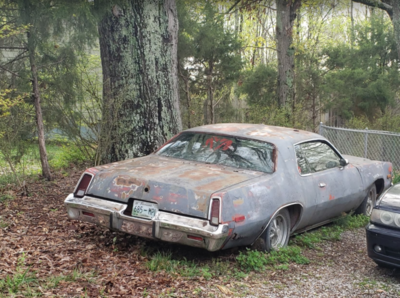The last of the real Roadrunners, let me explain (if you don't understand and/or are upset at that). We've all heard the disrespect given to the 75 'runner, mostly it's just a Fury, it's not a real muscle car etc. Consider the following: It's not just a Fury with a RR package, it specifically is NOT a Fury it has it's own VIN designation, 'M', it is still a big block capable B-body. Unfortunately that cannot be said of the 76 and up. It is a as much of a muscle car as a 74. Other than a 4 speed or a 340 every thing else was still available. (theoretically a 440 was available if you knew the right people). Depending on the source you read the 75 HP400 has the famed Magnum 383 camshaft in it, sounds kinda muscle car to me. It's literally the same platform as the 2nd gen 'Runners, floor pans are the same, firewall is almost the same, etc.
I have that off my chest and you have some ammo to defend them if someone rips on them.
The question on my mind now is how many more are out there? And here's a little more about mine. It has a heart that beats with a 400HP. According to my show room option book the specific blue (KB5) on this car was not available on Fury body (i.e. Roadrunner). But I have come across one other 75 Runner this same color blue, so it must have been added as an option later. Here’s the real rare find clincher; this one is labeled for export! Biggest engine available and labeled for export, that's gotta be close to a 1 of 1?
View attachment 900981 View attachment 900983 View attachment 900984 View attachment 900985 View attachment 900986
















